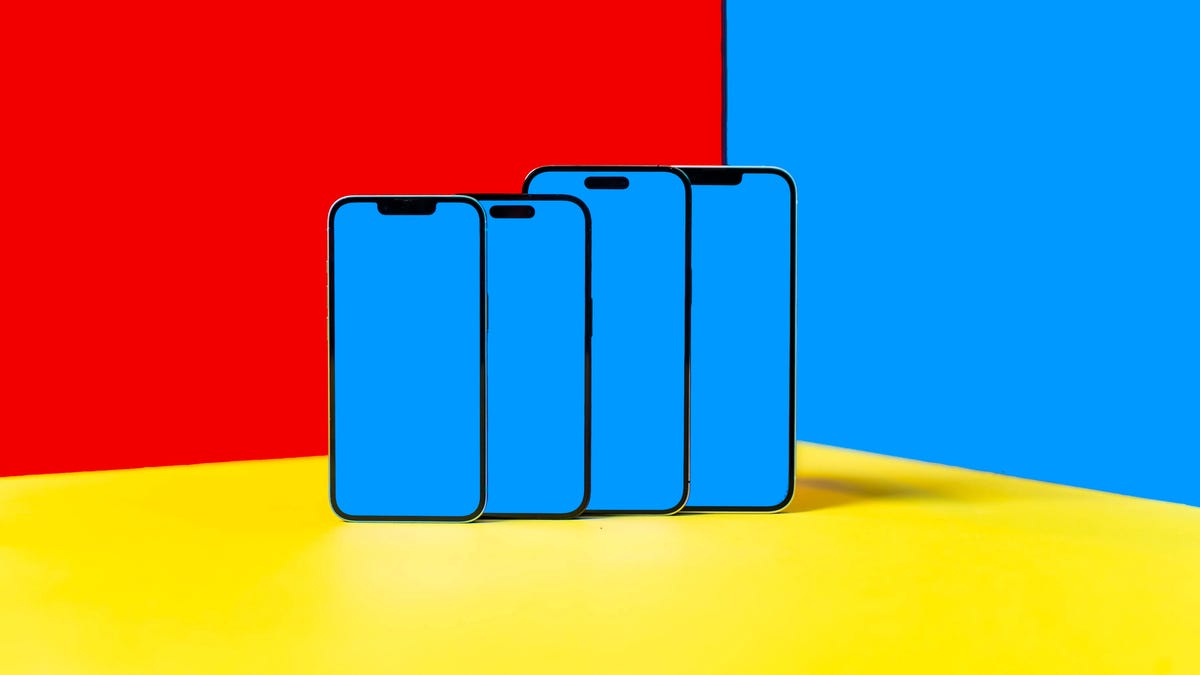Apple currently sells eight iPhone models, including one that dates back to 2020. Compare that to 2007 when Steve Jobs launched the original iPhone and the only option was getting 4GB or 8GB of storage. While there’s no such thing as a true “best” iPhone, depending on your needs, budget and preferences, some models will be better for you than others. With the addition of the iPhone 14 series and the iPhone 11, 13 Pro and 13 Pro Max being discontinued, deciding on the right one can be confusing.
In terms of prices, the current iPhone lineup starts as low as $429 for the 2022 iPhone SE and tops off at $1,599 for the iPhone 14 Pro Max with a whopping 1TB of storage. Below are the various models, their release date, the number of rear cameras they have, their processor and their current list price, which for some phones includes a $30 activation fee that’s waived if you activate your iPhone on a carrier at the time of purchase. And if you’re looking for the best iPhone deals, we have you covered there too.
Whether it’s the tiny iPhone 13 Mini and its 5.4-inch screen or the 2020 iPhone 12, you actually have a lot of options to choose from for your perfect phone. Navigating Apple’s iPhone spectrum can be overwhelming, whether you’re considering colors (the iPhone 13 comes in six), or features like the iPhone 14 Pro’s Dynamic Island, which expands and contracts to show system alerts.
Then there are the cameras. The iPhone typically has some of the best cameras found on any phone. But the iPhone SE has just one on the back. The 12, 13, 13 Mini, 14 and 14 Plus each have dual-rear cameras. And then there’s the 14 Pro and 14 Pro Max that not only have a trio of cameras but come with features like the ability to take ProRaw photos or record ProRes videos.
Read more: Best Wireless Earbuds for 2023: Top Options at Every Price
To further complicate things, carriers like AT&T, T-Mobile and Verizon as well as third parties like Best Buy and Amazon continue to sell discontinued models such as the iPhone 13 Pro and 13 Pro Max. And then there are the prices. Apple’s starting price for each model isn’t necessarily what you’ll pay. Nearly all of the phones on this list can be bought for significantly less with a mixture of trade-ins and/or service commitments with most US wireless carriers.
I know, it’s a lot. But I’ve tested all eight versions of the iPhone and can help you navigate through all the noise.
What is the best iPhone right now?
The absolute best iPhone is the $999 iPhone 14 Pro. It has all of Apple’s newest features, including an A16 Bionic chip, upgraded main camera, the Dynamic Island, as well as tools like Car Crash Detection and SOS via Satellite. Not everyone looking to buy a phone from Apple needs the 14 Pro, but if you want the best get the iPhone 14 Pro. Want something bigger? Get the iPhone 14 Pro Max, which is the regular 14 Pro in a bigger body.
I test every iPhone in real-world scenarios focusing on its features, design, performance, cameras, battery life and overall value. I document our findings in an initial review that is periodically updated when there are new iOS updates or to compare against new phones from competitors like Samsung, Google and OnePlus.
Photography is a major focus for the iPhone, so we take pictures and videos of various subjects in a variety of settings and lighting scenarios. We try out any new camera modes, such as Action mode that debuted with the iPhone 14 line.
Battery life
Battery testing is conducted in a variety of ways. We assess how long the iPhone lasts during a typical day of use, and note how it performs during more focused sessions of video calls, media streaming and gaming. I also conduct a video playback test, which isn’t always included in the initial review and added later in an update.
Performance measuring
We use benchmarking apps to measure the performance, alongside our own anecdotal experiences using the phone for our review. Of particular note are how graphics and animations look. Are they smooth? Or do they lag or stutter? We also look at how quickly the phone switches between horizontal and vertical orientations and how fast the camera app opens and is ready to take a photo.
We perform processor-heavy tasks like editing photos and videos, exporting videos and playing games. We evaluate whether a newer version of the iPhone includes enough features to make it worth upgrading from older models.
Read More:How CNET tests phones
Key terms
eSIM
An eSIM takes all of the important information about your phone account — including its number, wireless carrier and subscription — and stores it in software instead of on a physical SIM card.
With the iPhone 14, Apple removed the physical SIM card tray and embraced embedded SIM cards. This means you can’t just pluck your SIM card out of your current phone and put it into a new one. But this shouldn’t affect your experience since all the major US carriers and a number of smaller operators work with eSIM.
Apple has long supported eSIM, dating back to 2018’s iPhone XS, XS Max and XR. When setting up a new iPhone 14, the device will guide you through transferring your current provider over to the new phone. A list of supported wireless networks can be found on Apple’s website.
Apple’s iOS 16 is the latest version of Apple’s iPhone software. It’s on the iPhone 14 by default and is also available as an update for the iPhone 8 and later. iOS 16 includes new features such as customizable lock screens, an update to the Messages app that allows for unsending and editing iMessage texts and new photo editing tools.

